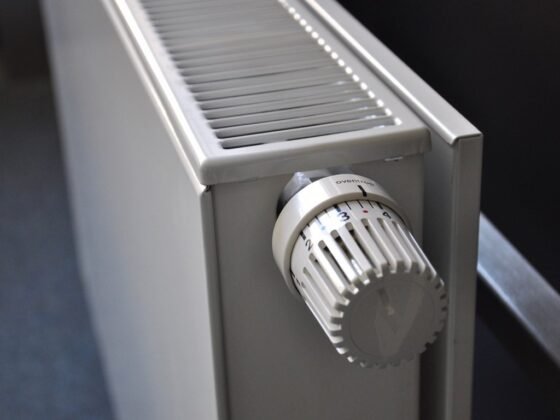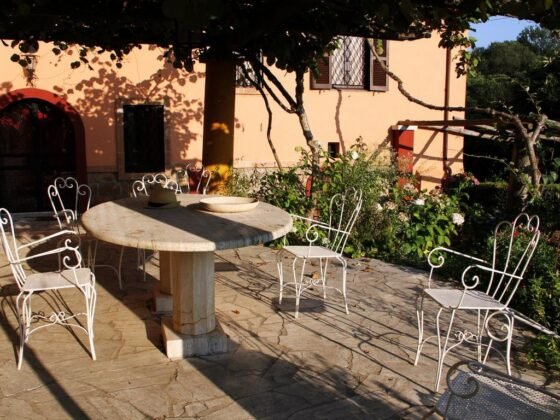Table of Contents Show
The main reason for soundproofing is to provide a quiet environment for people who need to concentrate on their work.

Soundproofing can be achieved by stuffing the gaps between planks with insulation or acoustic matting, or by installing floor insulation that has been specifically designed to reduce noise leakage through the floor.
Acoustic matting is thin sheets of a rubber-like material that are installed directly under the carpet. They are designed to reduce noise transmission through the air and provide an extra layer of protection if there is no insulation under the carpet.
Knowing What Noise to Suppress or Eliminate
There are 2 forms of noise that you need to reduce or eliminate for more tranquil rooms, and ultimately a more relaxed family. They are 1) Impact Noise and 2) Airborne Noise. Soundproofing your home’s flooring will keep them much quieter.
Soundproofing Ceramic Tile Floors
Ceramic tile flooring needs a solid foundation which is why you need a plywood sub-floor and special underlayment. The underlayment will help prevent tiles from cracking or breaking. (Particleboard, OSB, or chipboard have too much deflection especially if floor joists are more than 12″ on center.)
If you want to install a plywood subfloor, the best thing to do is lay it over your other materials. In order to increase soundproofing, apply Green Glue Noise Proofing Compound in between the layers of plywood.
This floor protector is great for both impact & airborne noise. Follow the instructions to screw the new plywood layer in place. Each screw should be at least 4-6″ apart so that they don’t come off when you’re jumping over them.
As a company that makes 100% recycled rubber solutions, we offer a range of thicknesses from 2mm-12mm to get the job done.
The product you’ve chosen is glued to the ground and applied as a layer on top of a base underlayment. When completed, it should have a sound transmission class rating of 59 and an impact insulation class rating of 56.
AbsorbaSound is a versatile product. It can be glued under the hardwood, laminate, and vinyl floors and it can be nailed or free-floating. Glue AbsorbaSound directly onto concrete.
Read Also:
Soundproofing Carpet Floors
Carpet can be a better sound suppressor than wood or tile flooring, but there are other ways you can lighten the noise it makes. Padding first, then putting down a soundproofing membrane will work best.
It will also provide soundproofing to any rooms with carpet you install. If it’s your preferred option for flooring type, the height issue is more easily resolved. You, or your carpet installer, can lay out the rug before the carpet pad and rug are installed.
Your flooring supplier can answer any questions you may have about how carpet and padding respectively affect sound transmission.
Ask them about noise transmission for both materials to ensure your office is as quiet as possible. One of the most important decisions you have to make when shopping for acoustic products is whether or not you need soundproofing.
If that’s what you’re looking for then be sure to look for pads that are good at noise blocking, rather than other types.
If you use the Quiet Walk Plus or any other soundproofing product, it will be an easier decision for you because you have already dealt with a lot of your noise problems.
Soundproofing Linoleum Floors
You should also keep in mind that when replacing vinyl flooring while also soundproofing, it is best to remove the old one before installing the new one.
It is not particularly tricky but nonetheless time-consuming if you don’t do it beforehand. The simplest way to soundproof a floor under sheet vinyl is to roll on the Quiet Walk Plus or Mass Loaded Vinyl over the existing floor.
Buy 1/4″ G1S (Good One Side) plywood and glue down the vinyl. If you’re using self-sticking floor tiles, make sure you put a smooth and level surface. If the original floor on your house is lumpy, using thicker plywood will ensure that it’s on a level surface.
Another option is to use a double layer of 3/8″ plywood with Green Glue spread between the layers. Green Glue is an excellent soundproofing product when used by itself, but it also enhances whatever else you are using. It can be used in spaces where sound will penetrate to isolate the sounds and allow for better noise insulation.
Soundproofing Floors When Building
When designing a new house, you can include any or all of the ideas. Your builder and architect may have more ideas, so be sure to consult them. As well, they will likely have their own favorite soundproofing products.
Even though your house will stay unfinished for a long time, you should still get soundproofing insulation installed where it needs to be. This is easier and usually less expensive than getting it done once the house is built.
If you think your child is going to be the new Ringo Starr, then invest in some soundproofing. If it doesn’t end up happening no worries! But if they are the next Ringo Starr, then failing to soundproof will mean that it sounds like you are playing loud music out in public.









